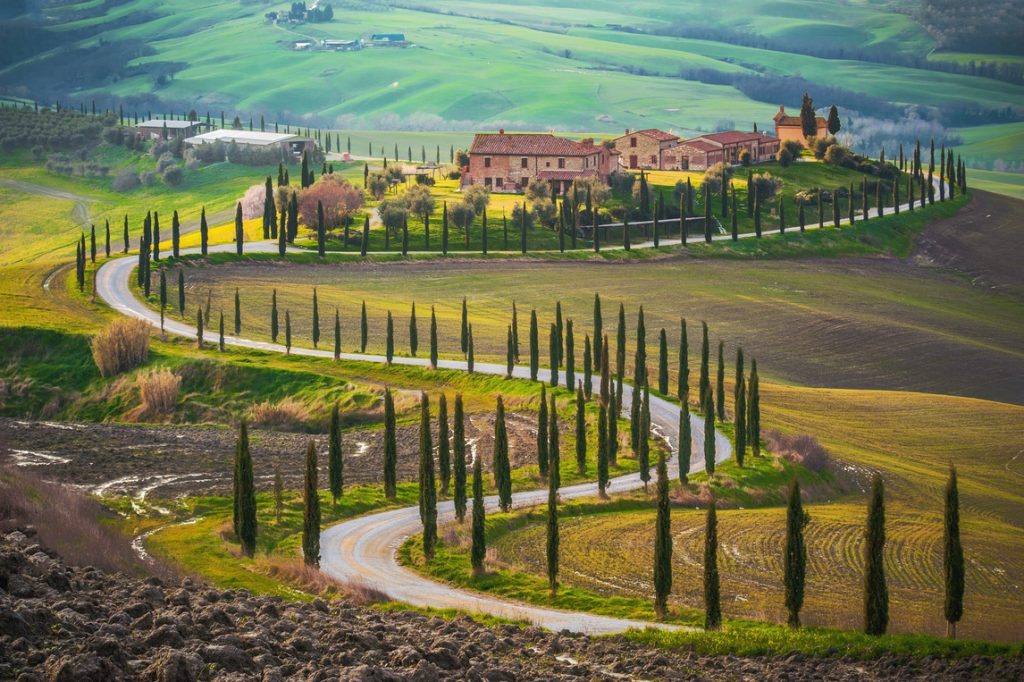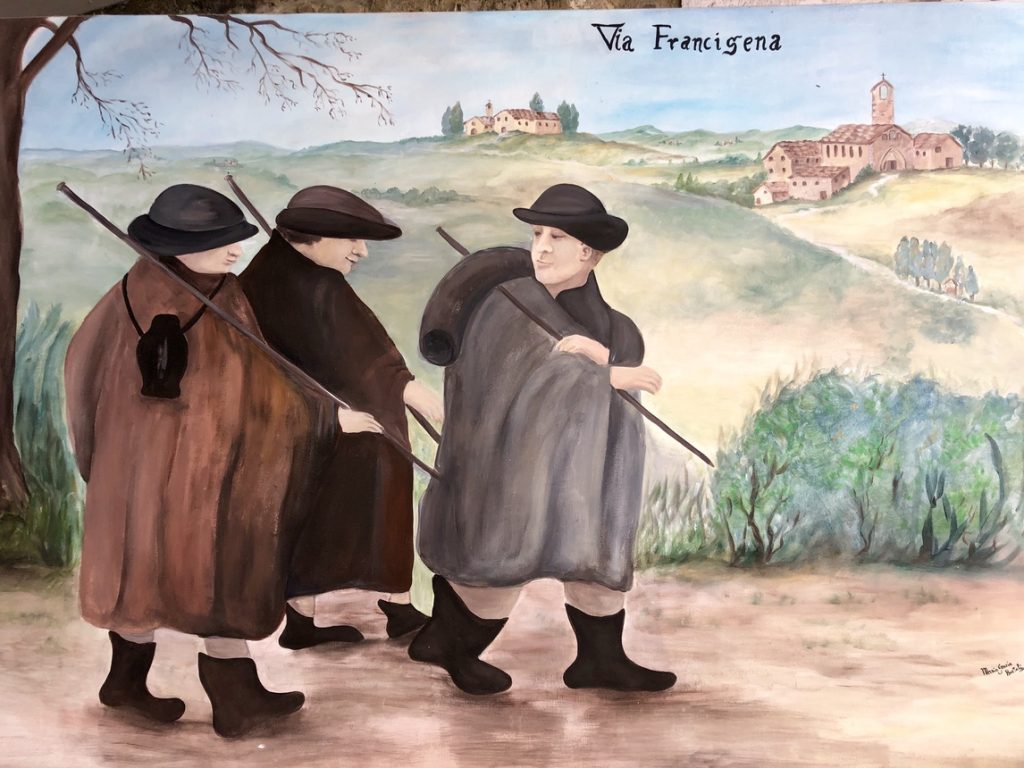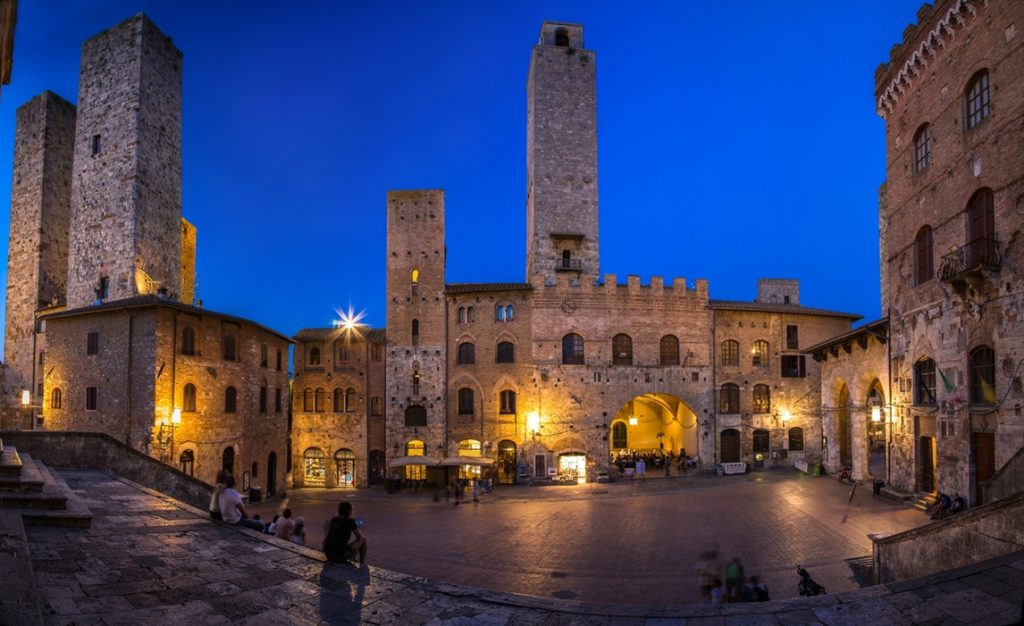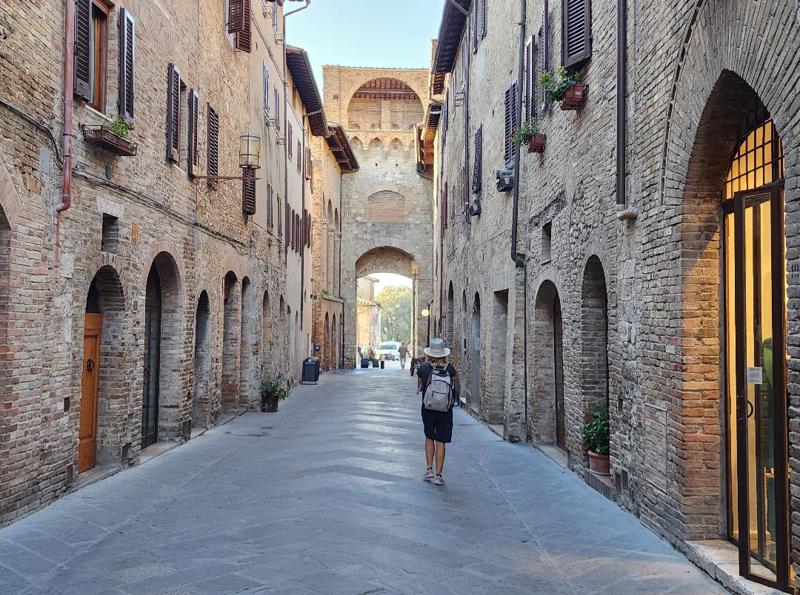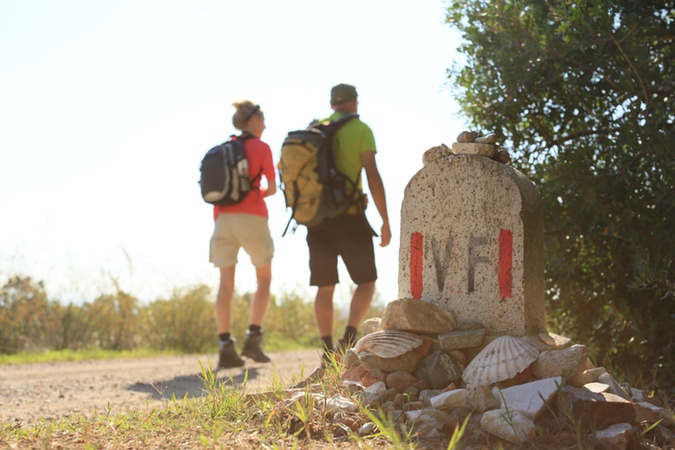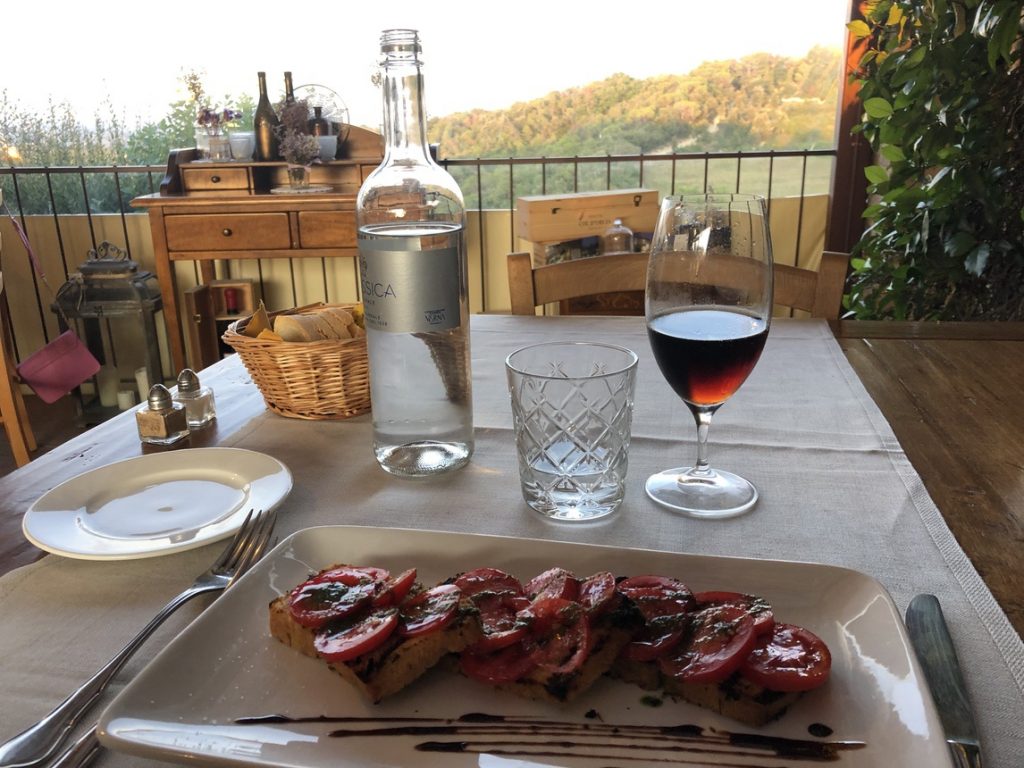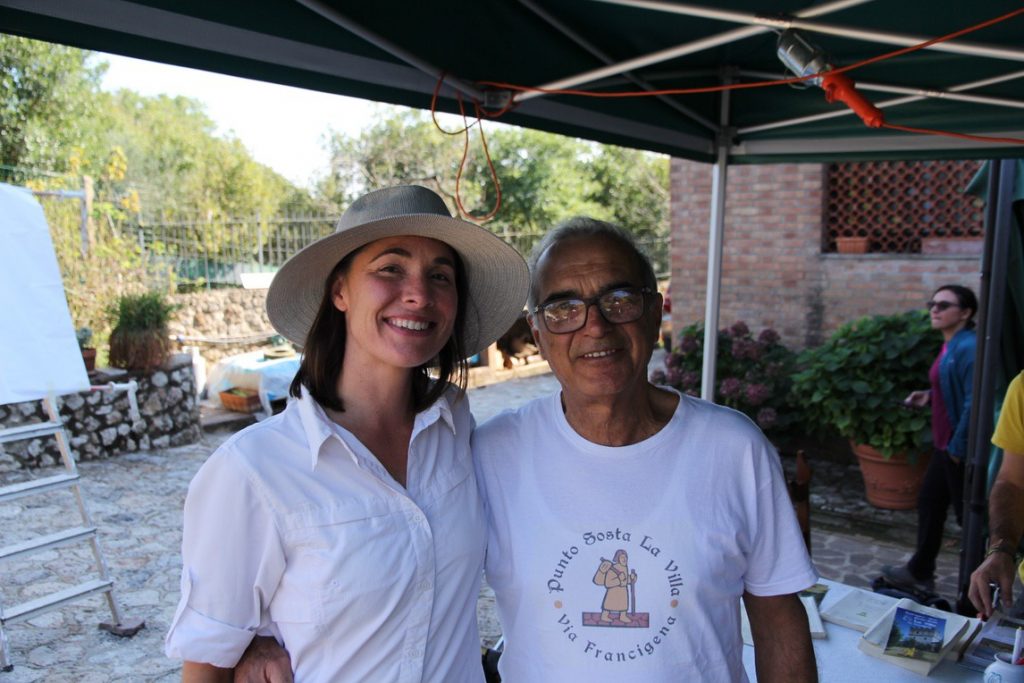08 Mar 24
7 Reasons to Walk the Via Francigena Pilgrim Trail through Italy
Walking Italy’s Via Francigena is a must-do experience! This ancient pilgrim trail offers an irresistible combination of quintessential Italian landscapes, medieval hilltop villages, the region’s artistic legacy, and of course soaking up the atmosphere in a historic piazza over a glass of Prosecco and a plate of antipasto.
The route extends a whopping 2040km from Canterbury to Rome, through England, France, Switzerland and Italy. The 400km section through the Tuscany and Lazio regions from Lucca to Rome is perfect for self-guided walking. At one time, making the pilgrimage to Rome to seek out the tombs of Saints Peter and Paul was just as popular as going to Santiago de Compostela! Today, many people see it as an alternative or a follow-up to Spain’s well-known Camino Frances.
2024 is a big year for the Via Francigena, as it celebrates the 30th anniversary of its certification as a Cultural Route of the Council of Europe in 1994. Meanwhile, Rome is already preparing for the 2025 Jubilee Celebration when an estimated 35 million people will flock to the city for the special holy year!
There is undoubtedly something truly magical about this pilgrimage route. Here are 7 reasons to escape to Italy and walk the Via Francigena pilgrim trail!
1. The landscapes are picture-postcard perfect!
The Tuscan countryside is timeless and captivating – big blue skies, vast panoramas, golden fields of wheat, sunflowers, distinctive cypress-lined paths, vineyards, olive groves, rustic stone farmhouses and masses of bright red poppies. The landscapes of the photographic ochre-tinged Crete Senesi and the famous Val d’Orcia are striking. You’ll be transported to another world when you walk the Via Francigena.
2. The trail is full of history
Walking the Via Francigena is an immersive experience. The artistic, cultural and religious heritage here is mind blowing. There are ancient aqueducts, gothic cathedrals and medieval fortresses to explore plus famous art collections in galleries and museums. In Siena, the striking duomo is jam-packed with artworks by Bernini, Michelangelo and Donatello and is just one of the many fascinating sites to explore during your stay!
3. The hilltop towns are striking
The captivating city of Lucca is a jewel in Tuscany’s crown; its intact Renaissance walls embrace a labyrinth of cobblestone streets and historic piazzas. The fairytale hilltop town of San Gimignano has an eye-catching skyline of 14 medieval towers. Tiny Monteriggioni is one of the oldest, most memorable and recognisable villages in all of Italy. The vibrant town of Siena situated at the southern end of the Chianti hills is bursting with art galleries, museums, atmospheric squares, churches. In cosmopolitan Lucca you can walk or bike around the 16th-century red-brick walls and admire views over the Apuan Alps and palazzo gardens. Bolsena and Montefiascone, on the shores of Lake Bolsena, both pack a punch with history, architecture and beautiful vistas. And the eternal city of Rome will leave an everlasting impression on all who visit.
4. The Via Francigena is not crowded
Walking the Via Francigena offers the luxury of uncrowded exploration. You will most likely be hiking alone a lot of the time, so if you are looking for a social experience during the day like the Camino de Santiago, this probably isn’t the route for you. That being said, many of the towns and cities where you will stay along this route are vibrant, bustling destinations in their own right and incredibly popular drawing tourists from all around the world. You will still meet other travellers from different countries and friendly locals, just not many during the day while you are walking. As you approach Rome, you’re likely to encounter more pilgrims and connect for an aperitif and dinner. The largest group of walkers remains Italians, but there has been a definite increase in pilgrims from non-European countries, including Australia and New Zealand.
5. The trail marking is good
When you walk the Via Francigena you’ll find a well-marked route. The style, design and colours of signs do vary greatly. The official markers of the Via Francigena are typically red and white with a black pilgrim silhouette. Markers can appear on road signs, stones, walls and trees. Together with our bespoke navigation app you should have no trouble finding your way. Walking distances on these routes range between 13km and 25km on undulating terrain, so the time spent walking can vary from 4 to 7 hours or so, depending on your walking pace. Like the Camino de Santiago, you can obtain a certificate of completion for the Via Francigena. The Testimonium is given to pilgrims who walk at least the last 100km.
6. There are gastronomic delights to discover
Italian cheeses, a cheeky Aperol Spritz, pasta served with the region’s rare white truffle oil, hand-made gnocchi, wild boar, homemade ravioli, and of course gelato, gelato, gelato! When you walk the Via Francigena trail, there is nothing better than savouring a picnic lunch on a vine-shaded bench, all washed down with a good bottle of local wine. You can purchase lunch or supplies in the villages along the way. Pizzerias and some bakeries sell pizza by the slice and this makes for a cheap, tasty meal. Bars will often have a selection of panini, pastries and gelati. Hidden trattorias tease with sumptuous Tuscan flavours.
7. Italians speak good English
If you are terrible at foreign languages, don’t worry. You can walk the Via Francigena without speaking fluent Italian, but learning some phrases and words will definitely help to improve your comprehension of what is being said around you and help you to make basic requests. It’s fun and relatively easy to speak Italian. Common words include buon giorno (good day), ciao (hi and goodbye), per favore (please), and bellissima (very beautiful).
BEST TIMES TO WALK
Spring (April and May) and autumn (September and October) offer exceptional times to walk through Tuscany. The mild climate is ideal walking weather. The wildflowers in spring (red poppies) and the harvest of grapes (September) and olives (October) are big draw-cards to the region. June offers pleasant but warm weather and glorious walking ahead of the heat and tourists in July and August.
WHAT WE OFFER
- Via Francigena: Lucca to Siena (9 days)
- Via Francigena: Lucca to Siena Group Trip (9 days)
- Via Francigena: Lucca to Buonconvento (11 days)
- Via Francigena: Lucca to Rome (24 days)
- Via Francigena: Buonconvento to Montefiascone (8 days)
- Via Francigena: Montefiascone to Rome (8 days)
READ MORE
Under the Tuscan Sun – Conquering Italy’s Via Francigena
After a long travel hiatus, Robyn and Chris from Broome in Western headed overseas for a 6 week adventure in Italy, which included a week walking through Tuscany on the Via Francigena. Enjoy a big dose of travel inspiration from their travel diaries.
Training for the Via Francigena
Eleanor and Kel from Benalla in Victoria hiked their way through the heart of Tuscany from Lucca to Siena on Italy’s Via Francigena. Read how they built up their fitness in preparation for their 128km journey.
Via Francigena – Gambassi Terme to San Gimignano
Read more about the stunning section between the quaint town of Gambassi Terme to the captivating hilltop town of San Gimignano.
BOOKS TO READ BEFORE YOU GO
- The Italian Camino by Maggie Ramsay
- Return To Glow: A Pilgrimage of Transformation in Italy by Chandi Wyant
- Like a Tramp, Like a Pilgrim: On Foot, Across Europe to Rome by Harry Bucknall
- Juliet by Anne Fortier

Written By
Sue Chater
Sue is RAW Travel's specialist for Italy and the Camino Portuguese. She has walked Italy’s Via Francigena through Tuscany and explored Puglia. Sue spent many years enjoying life as a tour leader in the Indochina region. Her most treasured travel memories come from the unscripted encounters that occur along the way.

